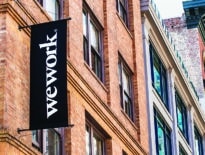
Economic fallout from the coronavirus pandemic is hitting Bay Staters of color hardest, and advocates say banks have a key role to play in helping turn the trend around.
With funding for the $349 billion federal Paycheck Protection Program gone in less than two weeks, some of the same communities disproportionately affected by COVID-19 also faced hurdles in accessing the money meant to help small businesses.
“We understand the impact that this coronavirus is going to have on all of our businesses, but particularly our small businesses of color, who came into this with less resources, less connection to networks,” said Eastern Bank President Quincy Miller during a panel discussion hosted by the Greater Boston Chamber of Commerce on April 14.
From being unbanked to limited accounting support, small business owners of color have faced challenges gaining access to PPP loans. Though Congress remains deadlocked on whether the program will receive additional funding, community organizations see opportunities for banks and credit unions to make efforts to help these businesses, many of them in the same communities most affected by the public health crisis.
In addition, minority communities are seeing the worst COVID-19 infection rates across Massachusetts, state data analyzed by UMass Boston’s Donahue Institute shows.
Few Relationships, Limited Access
The PPP was created as part of the CARES Act to help small businesses with payroll and some other expenses during the coronavirus crisis. Yet from the outset, people of color have faces obstacles applying for loans.
When the PPP launched just a week after being created, banks and credit unions were tasked with processing a high volume of applications as they were received. The program did not require lenders to consider racial or other disparities when making the loans.
Many financial institutions accepted applications only from existing customers, a source of problems from the outset, Segun Idowu, executive director of the Black Economic Council of Massachusetts, told Banker & Tradesman. His organization was inundated right away with emails from business owners – many without an existing banking relationship – who had applications denied because they weren’t already customers.
“We know that black and brown people and black and brown businesses are unbanked,” Idowu said. “Many of them refuse to create relationships with banks because of the negative history between banks and our communities, or just being denied loans. They figure, ‘What’s the point?’”
Other business owners reacted negatively to the idea of a loan, Idowu said, because of the history of predatory lending in communities of color. While some or all of a PPP loan can be forgiven, “our brain automatically shuts off at the idea of ever getting a loan, no matter who’s backing it up,” he said.
Limited Back-Office Support
For those who did apply for PPP loans, problems with the loan calculation and the documents needed for the application could be tied to the lack of back–office support, a known barrier for minority-owned small businesses to succeed, Idowu said.
“We are experts in the crafts and industries that we’re in,” Idowu said. “We are very, very good at the front–facing aspect of the business, but we don’t have either the time or the luxury to be able to focus on the back–office items.”
Miscalculating the loan amount could have consequences for small business owners. During Greater Boston Chamber of Commerce panel, Miller said Eastern Bank had encountered problems with about 40 percent of the applications it had received, including requests for too much money.
Because 75 percent must be used for payroll for the loan to be forgiven, Miller said, incorrect calculations could leave business owners stuck with loans instead of grants.
How to Get It Right
If Congress makes another round of funding available, Idowu would like to see more banks work with business owners of color, including those who are not customers. He singled out Berkshire Bank Executive Vice President and Chief Experience and Culture Officer Malia Lazu for reaching out to BECMA to let small business owners know non–customers could apply at Berkshire.
Idowu also said lenders should capture demographic information for those receiving PPP loans. This information would help organizations like BECMA understand who had received loans and who should be targeted for outreach.
“The goal was to get it out quickly and not to get it done right,” Idowu said. “Now that we’ve had time, we want to get it right.”
Lenders should also reach out to community organizations – like BECMA, Amplify Latinx, CommonWealth Kitchen, the Foundation for Business Equity and other groups working with small businesses – to coordinate efforts to help business owners get funding and other resources to begin to rebuild, he said.
“They should be talking to all of these groups to ensure that they are not continuing the cycle of discrimination or contributing to the growth of the racial wealth gap here in Massachusetts, which we know is going to grow because of this crisis, but we want to help contain that growth so that it doesn’t explode,” Idowu said.
SMBs Will Need More Help

Diane McLauglin
Lazu, who participated in the Greater Boston Chamber of Commerce’s panel discussion, said banks had made a “Herculean effort” to process applications, but she encouraged more to get involved.
“This is a time for us to get money in the hands of people so that Main Street can be saved,” Lazu said.
She added that rebuilding small businesses would take efforts beyond PPP loans and questioned whether the issues affecting small businesses of color during the current crisis could be addressed without solving racism. While she did not have an answer, Lazu said structural racism in the American economy meant lenders need to approach the world with an equity lens.
“We want to do as much as we can now, but we also don’t want to lose sight that the reason why we are here and will continue to be here is because there’s two – and maybe even more – Americas.”




 |
| 

